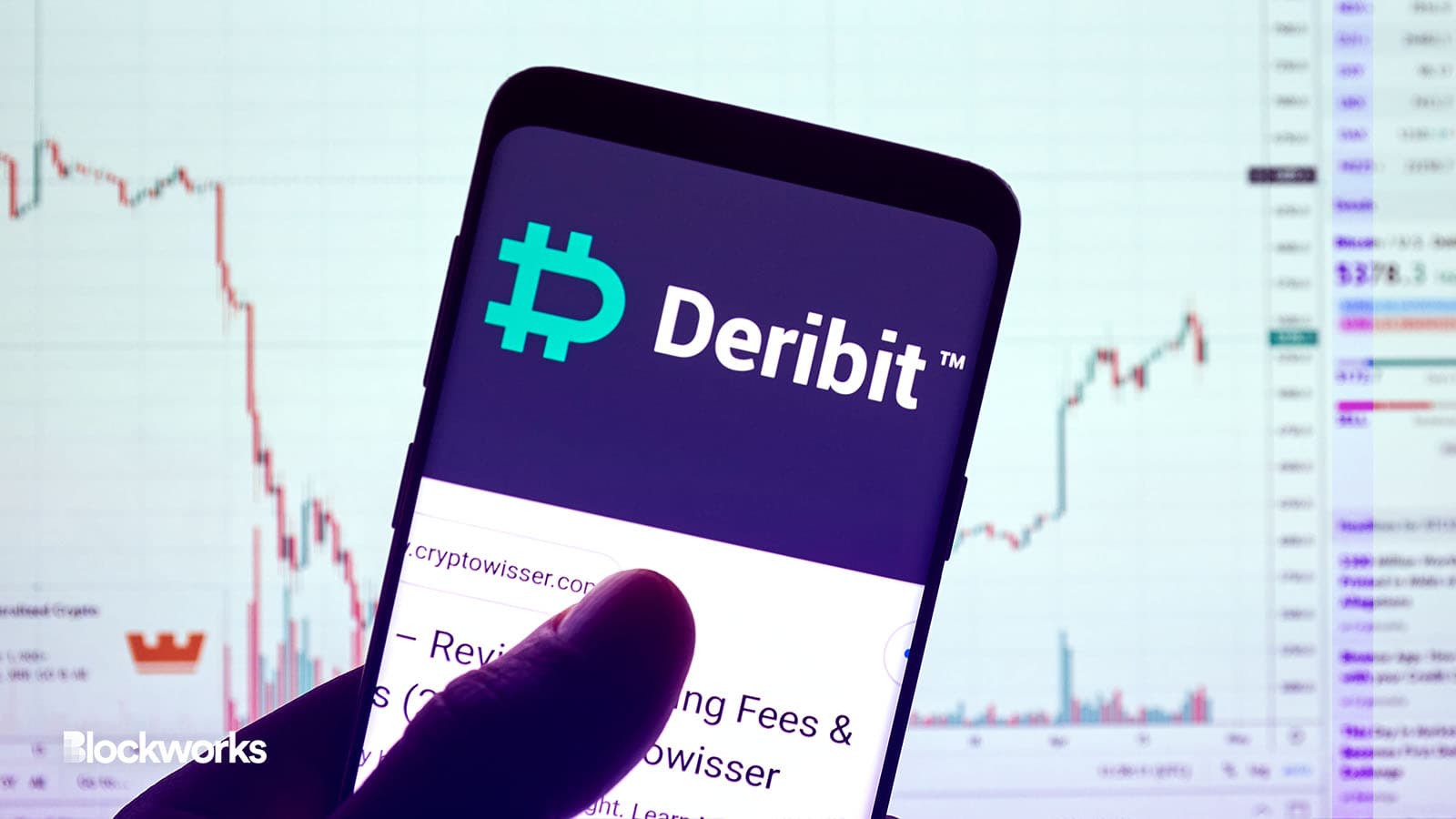Deribit quarterly bitcoin options to expire, but volatility impact should be minor
Deribit’s bitcoin and ether options are set to expire Sept. 29, analysts forecast minimal impact, despite typically a volatile period

dennizn/Shutterstock, modified by Blockworks
Options contracts for the quarter on the leading global crypto derivatives exchange are due to expire at month’s end, a timeframe that has traditionally seen heightened market volatility.
The week ahead marks the month-end and quarter-end expiry date for bitcoin (BTC) and ether (ETH) options contracts for Deribit, with nearly $5 billion notional expiring on Sept. 29.
Luuk Strijers, Chief Commercial Officer at Deribit, told Blockworks the figures this September are consistent with this year’s trend when compared to the previous June’s $5.4 billion and March’s $5.2 billion expiries.
The current quarter’s expiries account for 35% of the platform’s open interest, involving 113,000 BTC and 1.1 million ETH options contracts, Deribit data shows.
“Quarterly expiries are typically the most significant, in terms of volume and value,” Strijers said. “In the past month, we have seen stable markets while the Gamma of the September expiries has increased gradually as a function of time.”
In simple terms, Gamma measures how sensitive an option’s price is to a change in the price of the underlying asset, in this case, BTC and ETH. A rising Gamma means that, as the asset’s price changes, the option’s price will change quickly.
In spot markets, a rising Gamma in options can have a ripple effect. When Gamma increases for options, market participants holding those options may have to adjust their positions more frequently to hedge their risks.
Adjustments often involve buying or selling the underlying in the spot market. If Gamma is rising and the price of BTC increases, an option holder might need to buy more BTC in the spot market to remain hedged. Conversely, if BTC’s price falls, they might need to sell BTC.
The effect of an options expiry depends on the open interest for particular strike prices and how they relate to the current market price, Strijers said.
If a position has a strike price significantly different from the current price, it will likely expire worthless, lessening its impact on trading.
On the other hand, if the strike price is close to the current market price, it could attract more trading activity, potentially leading to increased price fluctuations and volatility, the Deribit executive added.
“The impact of an uneven distribution of Gamma amongst traders would have [previously] resulted in much more volatility as compared to what we have seen these days,” Strijers said. “Therefore we don’t anticipate strong market moves in the coming week.”
The consensus around September’s expiry is forecasted to have little effect on digital asset spot prices, according to other analysts Blockworks spoke with.
Le Shi, head of trading at Auros said lower volatility in crypto is affecting institutional interest, implying a stable crypto market is likely, especially when juxtaposed with other financial markets that offer higher returns.
“Lower implied volatilities are reflective of the market consensus that not much is expected to happen in the near term,” Shi said.
Markus Thielen, Head of Research and Strategy at Matrixport agreed, adding there existed waning interest in options trading, specifically the decline in premium prices for option sellers.
“While volatility tended to trade at a hefty premium, the decline in premium is now synonymous with picking up pennies in front of a steamroller, Thielen said. “The potential approval of a US-listed bitcoin ETF has added event risk to the mix that is tough to manage for option sellers.”
Get the news in your inbox. Explore Blockworks newsletters:
- The Breakdown: Decoding crypto and the markets. Daily.
- 0xResearch: Alpha in your inbox. Think like an analyst.






